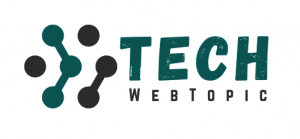The pandemic completely changed how companies work and sped up the digital shift of almost every industry. Companies had to change quickly as customer tastes moved towards digital-first and mixed interaction models. Digital engineering services are crucial. Engineering now creates new products and ensures everything works. In this article you should know about digital engineering.
The ultimate challenges you should know about:
In the tech world of today, things change quickly. If you want to stay competitive, you need to know about some of the most significant issues in digital engineering.
1. Talent Shortage: The Battle for Skilled Engineers
A lack of skilled people is one of the most critical problems in engineering right now. The business world thinks that between 2021 and 2025, 149 million new digital jobs will be created around the world. However, many businesses have trouble filling these roles because of tough competition and the effects of the Great Resignation that are still being felt
The “Great Inflation” has also raised pay standards, and the cost of compensation has gone up by 4.4%. Google, Apple, and Tesla pay engineers more than others. Showing that engineering is not a support role but a business essential is one method. Technologists in top positions tend to bring in more serious and skilled workers to an organisation.
Additionally, by bringing in specialised skills on demand, outsourcing to a reputable data engineering company or collaborating with providers of digital engineering services can help close the talent gap. In 2021, 69 million Americans quit their jobs in search of better pay and a better work-life balance.
2. Lack of Chip-to-Cloud Capabilities: Falling Behind in Innovation
Another big problem is that Chip-to-Cloud features are not yet ready. As more and more industries go digital, digital engineering trends are moving towards Chip-to-Cloud, which is the idea of a smooth, safe connection between devices and the cloud. This new idea makes it possible for gadgets in industries like manufacturing, healthcare, and cars to have better data security, get changes in real time, and run more efficiently on less energy.
Legacy companies need to make significant changes to catch up. Teams need to learn new skills, and companies need to move away from vertical-specific skills and towards a more flexible, cross-functional approach. This means combining skills such as hacking, chip design, and computer infrastructure.
Businesses that can’t make this change risk becoming obsolete. Companies can get ahead by working with a data engineering company that focuses on Chip-to-Cloud integration and digital engineering solutions. This helps them get technical know-how and get their products to market faster.
3. Budget Pressures on ER&D: Balancing the Old with the New
The budgets for engineering, research, and development (ER&D) are being strained by inflation and economic instability. This means that ER&D funds need to be balanced between the old and the new.
Even so, there is reason to be hopeful. Many CFOs know that spending on technology is a crucial way to get things done when times are tough. Digital spending is expected to grow at a CAGR of 18% and pass old engineering spending by 2025.
Companies need to streamline their operations and use digital engineering services that offer innovative ideas at a low cost to handle these competing goals. Instead of keeping internal teams that are too big, companies can do more with less by outsourcing to partners who have experience with go-to-market and fast product creation.
4. Need for Reliable Partners: The Rise of End-to-End Solutions
Businesses often worked with more than one provider for specialised services before the outbreak. But when COVID-19 limited face-to-face teamwork, companies saw how useful it was to work with fewer, smarter partners. Since then, the move towards digital engineering solution companies that do everything has only sped up.
Costs are lower, communication is easier, and the development process is more integrated with end-to-end agreements. UST uses a full-stack model to help businesses come up with new ideas faster and scale their digital experiences while keeping costs low.
UST’s digital engineering services bridge the gap between current and future needs. Because they understand IoT, AI, cloud, and machine learning, clients can move swiftly and confidently. UST is a one-stop shop, so organisations may reduce connections and speed up deployment with fewer difficulties.
From a lack of skilled workers to integrating chips into the cloud, these are the most significant problems you need to know about to make your digital transition a success.
Conclusion: Navigating the Future with the Right Strategy
Businesses are moving towards a future where everything is related digitally, so following the newest digital engineering trends is no longer a choice
It’s a must. But desire alone isn’t enough to succeed in this world that changes so quickly. Companies need to deal with some big problems, like finding good employees, adapting to innovations like Chip-to-Cloud, controlling their ER&D funds, and building strong relationships.


